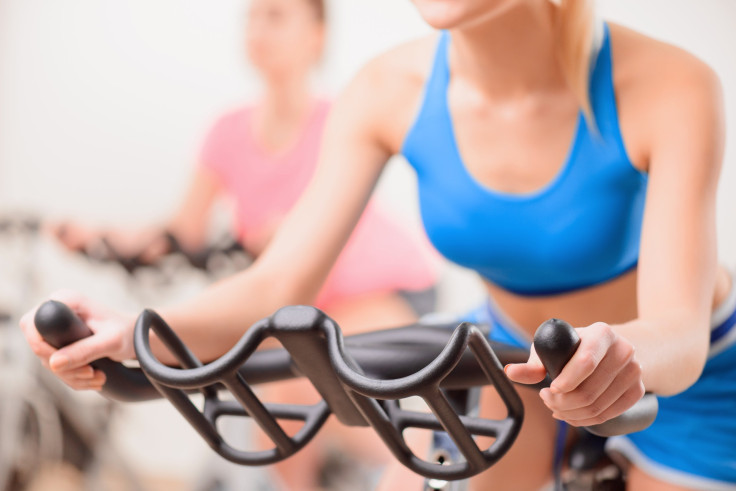Soul Cycle: Pedaling Backward On An Exercise Bike, In Addition To Forward, Could Improve Your Workout

Ask anyone who knows about fitness and most, if not all of them, will tell you to diversify your fitness routine. Simply put, constantly doing the same exercises will eventually cause the body’s progress to stall — known as a plateau. Gym-goers who frequently use the elliptical or stationary bike often alternate between pedaling backward and forward for this reason. But does alternating the direction in which we pedal actually stimulate our muscles in different ways? A new study says it does.
The study comes from scientists at the American Council on Exercise (ACE), who wanted to see if pedaling backward on a stationary bike could provide benefits beyond those of regular cycling. While it’s uncommon for anyone with a bike to ride backward — unless they’re riding a fixed gear — pedaling backward on a stationary bike was found to target the leg’s muscle groups differently, a result of the pulling motion. While there wasn’t a difference between the direction a person pedaled and most of the muscles they worked out, the researchers found that pedaling backward activated three quadriceps muscles more than when pedaling forward.
For the study, the researchers enlisted 16 healthy volunteers (eight women, eight men) to participate in two experiments on the Cascade CMXRT recumbent exercise bike, which is designed to mimic the real-world feel of outdoor cycling and also allows its rider to pedal backward.
The first experiment was meant to test heart rate and oxygen consumption (VO2). Participants were split into two groups and asked to complete six, five-minute-long intervals of submaximal exercise; while one group pedaled forward for three intervals then backward for the last three, the other did the opposite. The second experiment was run like the first, although this time participants were also hooked up to electromyography (EMG), which looked at the muscles being activated.
The researchers found that although each participant underwent identical workouts in both the forward and backward direction, their heart rates were higher by about eight beats per minute when pedaling backward. They also consumed more oxygen and burned more calories. This heightened activity could be explained by the more active quadriceps muscles; the vastus medialis was about 17.5 percent more active, while the vastus lateralis and rectus femoris were a respective 11.1 percent and 13.1 percent more active when pedaling backward.
Because most cycling involves moving forward, “pedaling forward should still make up the vast majority of a cyclist's training,” said Dr. John P. Porcari of the University of Wisconsin. “But the subtle differences in muscle activation seen when pedaling backward can be very beneficial.” He recommended using backward pedaling as a way to diversify a workout, especially when trying to target the quads. Maria Cress, who also worked on the study, also noted backward pedaling could eventually make pedaling forward “mentally and physically easier.”
Nevertheless, riders should use caution when pedaling backward, especially if doing so on an actual bike. For years, scientists have warned about backpedaling, as it could cause the foot to lose grip of the pedal. The pedal crank could then come around and hit the shin or ankle. Fixed-gear bike riders who quickly try to stop backpedaling may also put too much pressure on their knees, risking tears to cartilage or the meniscus.
Source: Cress M, Porcari J, Kernozec T, Foster C, Green D. Moving Forward By Pedaling Backward? ACE ProSource. 2015.



























